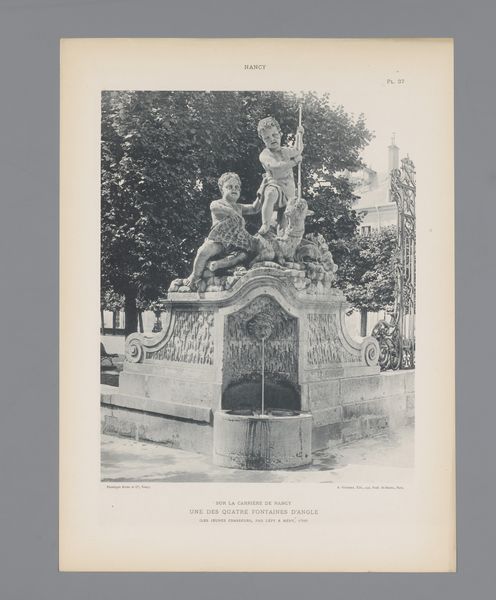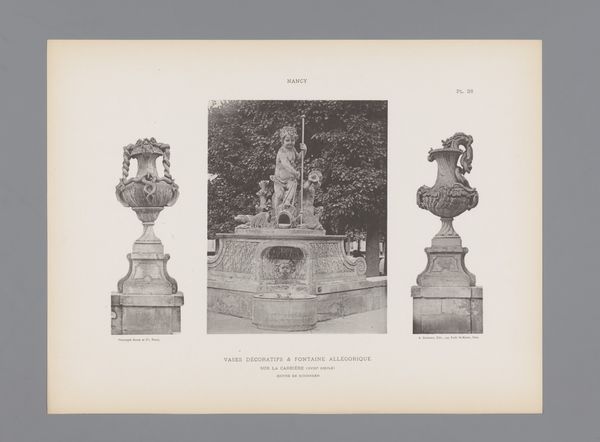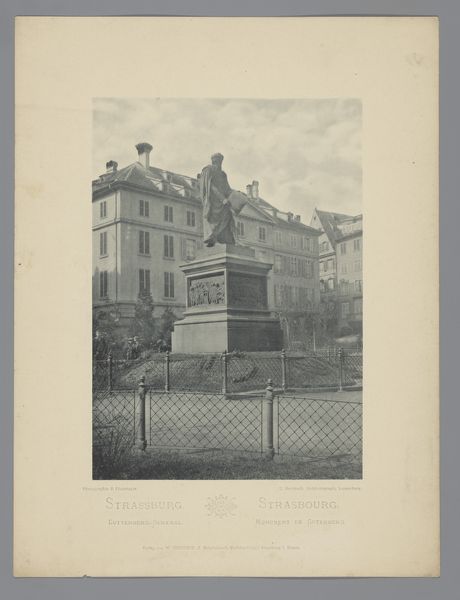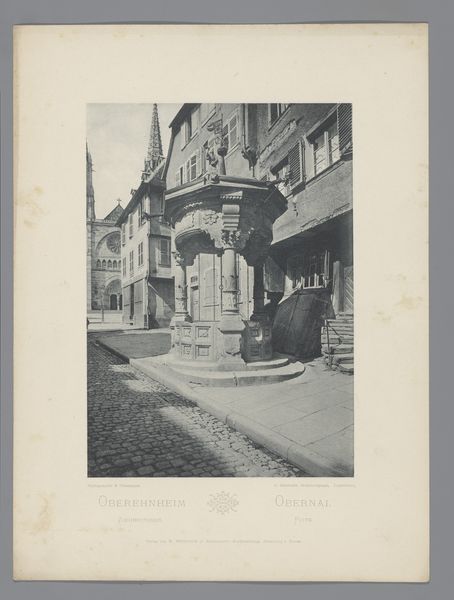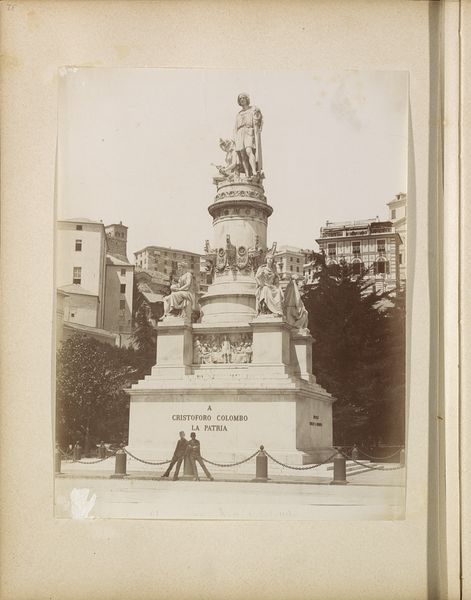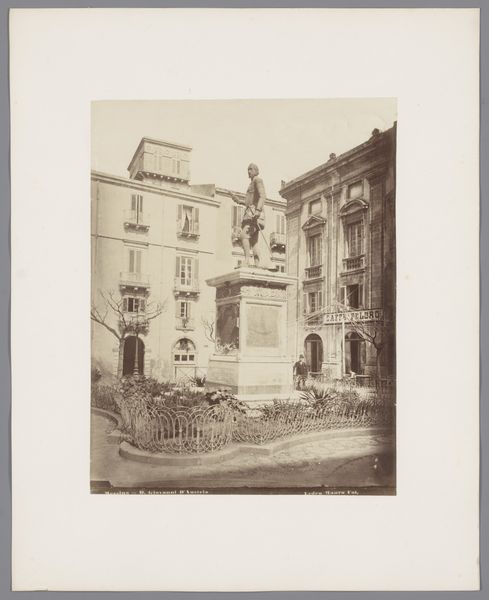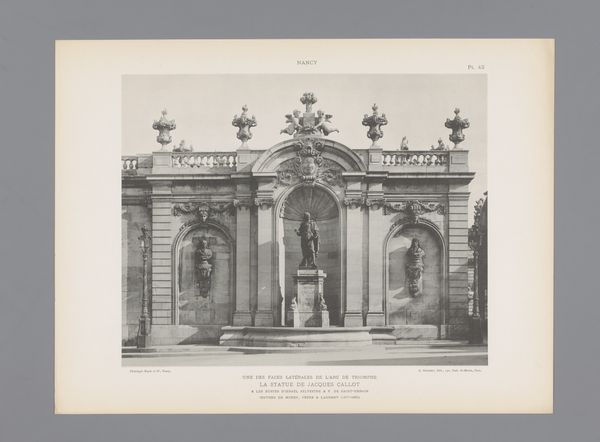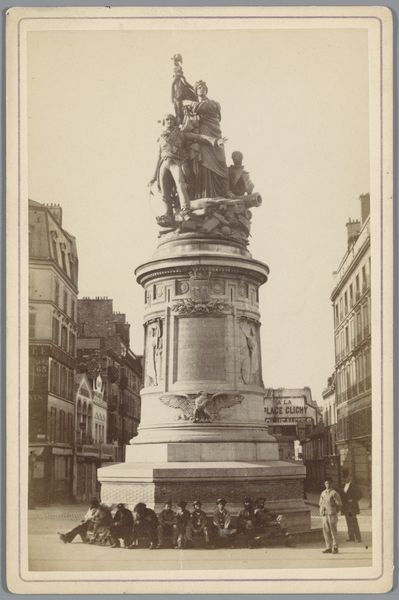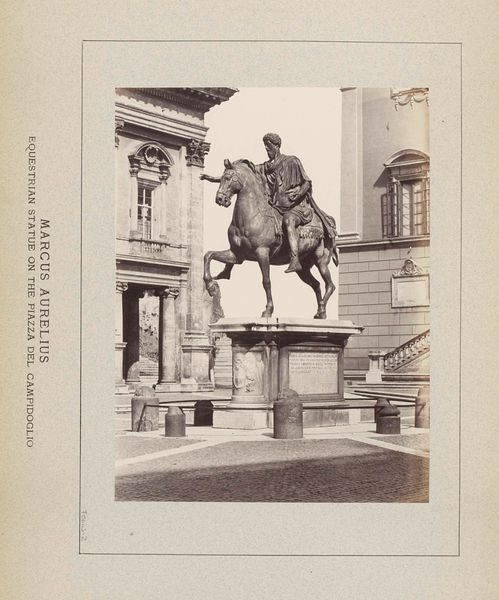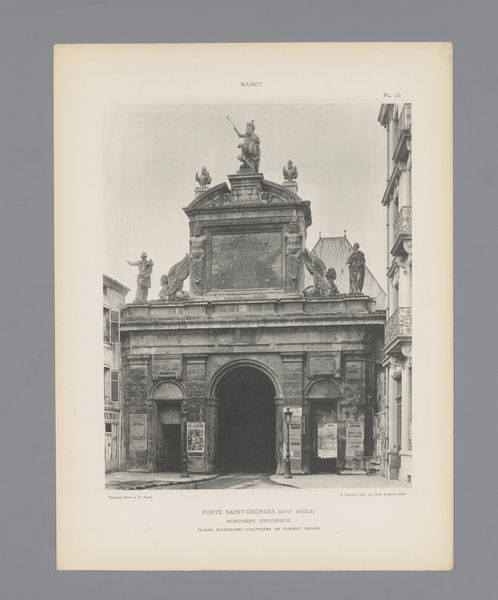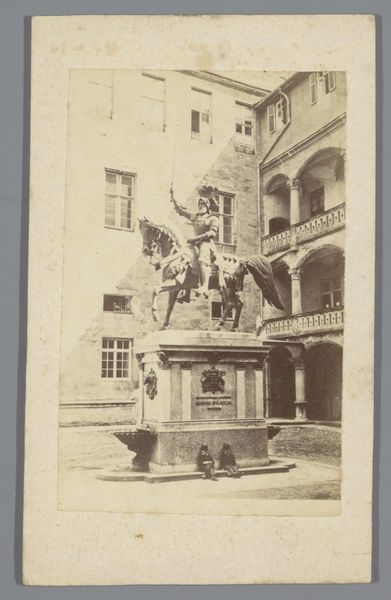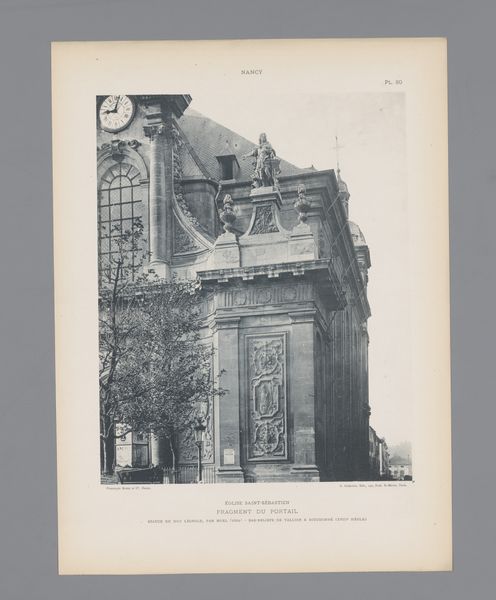
Dimensions: height 401 mm, width 298 mm
Copyright: Rijks Museum: Open Domain
This is an anonymous print depicting the statue of René II of Lorraine in Place Saint-Epvre, Nancy. This image is a potent example of how public art reinforces social hierarchies, especially when it commemorates a figure from the past. The statue, prominently placed in a public square, serves as a constant reminder of René II's legacy. Equestrian statues, like this one, have historically been associated with rulers and military leaders, symbolizing power and authority. The choice of this form immediately elevates René II, associating him with a lineage of powerful figures. Made in France, this artwork prompts reflection on the social and political motivations behind erecting monuments in public spaces. It also underscores the role of art in shaping collective memory and reinforcing dominant narratives. To truly understand its significance, we might delve into the history of Nancy, Lorraine, and the socio-political climate in which the statue was erected. We might ask: what was the agenda behind celebrating René II in this particular way? Exploring archives, historical documents, and critical texts helps us grasp its full meaning and impact.
Comments
No comments
Be the first to comment and join the conversation on the ultimate creative platform.
